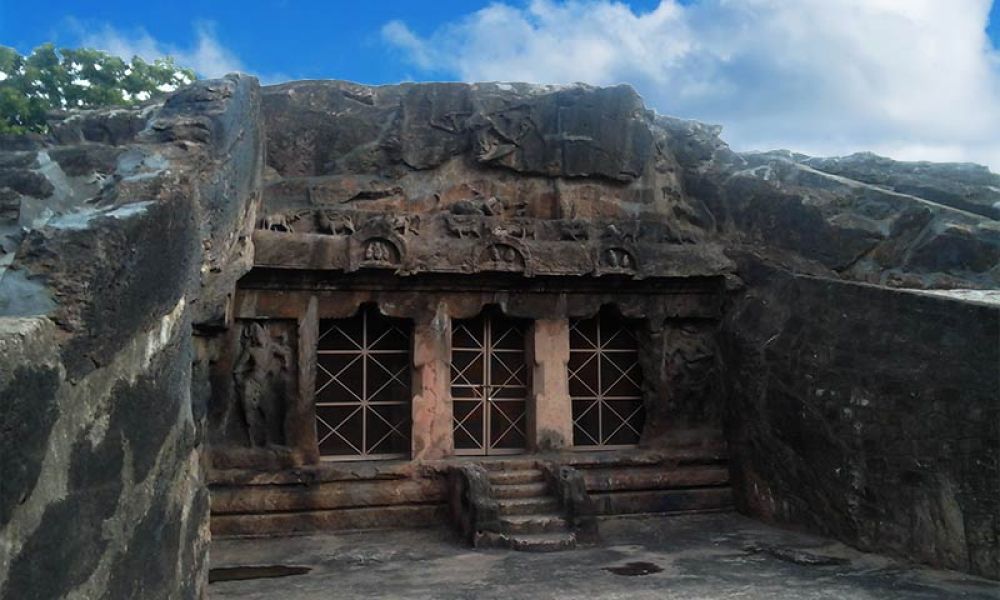

The Mogalarajapuram Caves, situated in the city of Vijayawada in the Indian state of Andhra Pradesh, have been a witness to the region's history for centuries. These caves are known for their rock-cut sanctuaries and are considered to be among the earliest examples of Gupta architecture in South India. With a history that dates back to the 5th century AD, the Mogalarajapuram Caves are a testament to the skills and spiritual dedication of ancient Indian stonemasons and artisans.
The caves are believed to have been carved during the time of the Vishnukundina dynasty. Though there are five cave temples, only three are well preserved. Among these, the highlight is a cave shrine that is dedicated to the Hindu deity, Nataraja. This cave is unique because it is one of the few places in South India where an idol of Nataraja dating back to this period can be found.
Another significant aspect of these caves is that they are one of the very few rock-cut temples that have been dedicated to the deity Ardhanarishvara, which is a composite form of Lord Shiva and Goddess Parvati. However, the sculpture of Ardhanarishvara has suffered significant damage over the years.
Despite their historical and architectural significance, the Mogalarajapuram Caves remained largely off the mainstream tourist radar until the latter half of the 20th century. It is only in the past few decades that efforts have been made by the Archaeological Survey of India (ASI) and the Andhra Pradesh Tourism Development Corporation to promote the caves as a tourist destination.
Tourist interest in the caves has been increasing steadily, with visitors coming to admire the ancient rock-cut architecture and learn about the region's past. The government's initiative to improve accessibility and facilities around the caves has further helped in boosting tourism.
In recent years, cultural tourism has been on the rise, and the Mogalarajapuram Caves have benefited from this trend. Tourists are more inclined toward exploring historical sites that offer a glimpse into the rich cultural heritage of India.
Eco-friendly tourism is also becoming increasingly popular, with visitors looking for destinations that promote sustainability. This has led to the development of the surrounding areas with a focus on maintaining a clean and green environment around the cave temples.
If you are planning a trip to Vijayawada, a visit to the Mogalarajapuram Caves should definitely be on your itinerary. The caves are open to tourists throughout the year, although the ideal time to visit is from October to March when the weather is pleasant.
It is recommended to reach the site early to avoid the midday heat and to have ample time to explore the caves thoroughly. As you tread the path of history within these caves, you'll not only witness the incredible craftsmanship but also imbibe the spiritual aura that the place continues to exude even after centuries.
Please note that while there is no entry fee, donations for the maintenance of the caves are welcomed. Additionally, be sure to wear comfortable shoes as there can be a fair bit of walking involved on uneven terrain.
The caves are situated just a short distance from Vijayawada city center and are well-connected by road. You can hire an auto-rickshaw or a taxi, or even use public transportation to reach the site. For those interested in staying close to the historical site, Vijayawada offers a range of accommodation options for different budgets.
For a satisfying and enriching experience, consider engaging a local tour guide who can provide you with deep insights into the history and the mythology associated with the Mogalarajapuram Caves. Whether you are a history buff, a spiritual seeker, or just looking for a unique travel experience, the caves are sure to leave you with a sense of wonder and admiration for India's ancient civilizations.
Embrace the opportunity to witness a slice of India's glorious history and visit the Mogalarajapuram Caves on your next trip to Vijayawada.